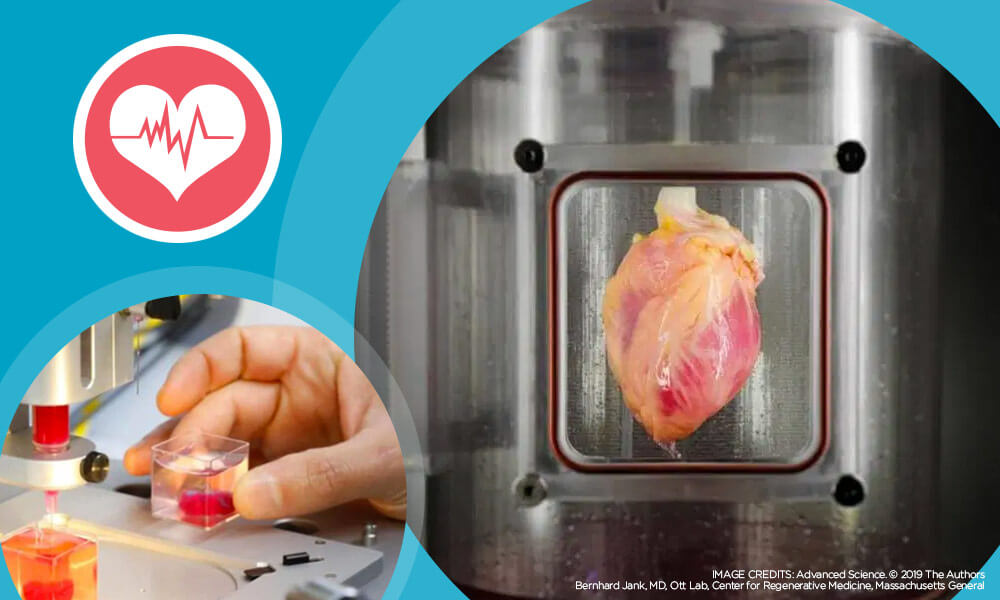This year has seen incredible advancements in the field of heart transplants and stem cell science. After years of research, a group of scientists in Tel Aviv has successfully used 3D printing and stem cells to create a functional human heart.
Their research represents a breakthrough in organ transplantation and could one day give thousands of people around the world the chance of receiving a healthy heart.
What did the Tel Aviv study involve?
The study involved printing a 3D vascularised engineered heart using stem cells.
Incredibly, the finished heart matched the immunological, cellular, biochemical and anatomical properties of the patient. In short, it was a bespoke organ designed for a specific patient, with little risk of rejection compared with a normal transplant.
The study involved taking a biopsy of fatty tissue from the patients. Scientists then separated cellular materials from this sample.
The cells were reprogrammed to become pluripotent stem cells, then mixed with collagen and glycoproteins to make a ‘personalised hydrogel’ that would serve as the 3D printer’s “ink”.
The cells were then differentiated into cardiac cells in order to make patient-specific, immune-compatible cardiac patches with functional blood vessels.
What next for the study?
Next, the team will be working to make the hearts successfully pump by ensuring they work together as one. It is hoped that within ten years, there will be organ printers around the world to enable everyday organ transplants.
Heart transplants in the UK
- Around 200 heart or heart-lung transplants are carried out on adults in the UK each year
- Around one in six people do not receive the heart transplant they require
- Currently around 15,000 people under 65 each year in Britain could benefit from a heart transplant, but there are only around 150 organs available annually
- The number of patients waiting for a heart transplant has risen by 162 per cent in a decade
- There are 192 children in the UK waiting for organ transplant and 42 of them need a heart
In Massachusetts, researchers have also managed to create a beating heart with stem cells.
What did the Massachusetts study involve?
The study involved using 73 donor hearts that had been deemed unfit for transplant to create new hearts.
Firstly, scientists at Massachusetts General Hospital took skin cells from their patients and reprogrammed them to become pluripotent stem cells. These cells were then encouraged to develop into cardiac cells.
After this, researchers stripped cells away from the donated hearts and replaced them with the transformed cells.
They mimicked the environment that a human heart grows in before infusing the cardiac cells with a nutrient solution that encouraged them to grow.
Just two weeks later, the team shocked the hearts with electricity, and the hearts started to beat. Further analysis also showed they had successfully formed well-structured and functional tissue.
Now that the team have made beating hearts using stem cells, the next step is grow an entire heart for transplant.
Request a Welcome Pack
Find out more about cord blood banking by downloading a Welcome Pack now.









